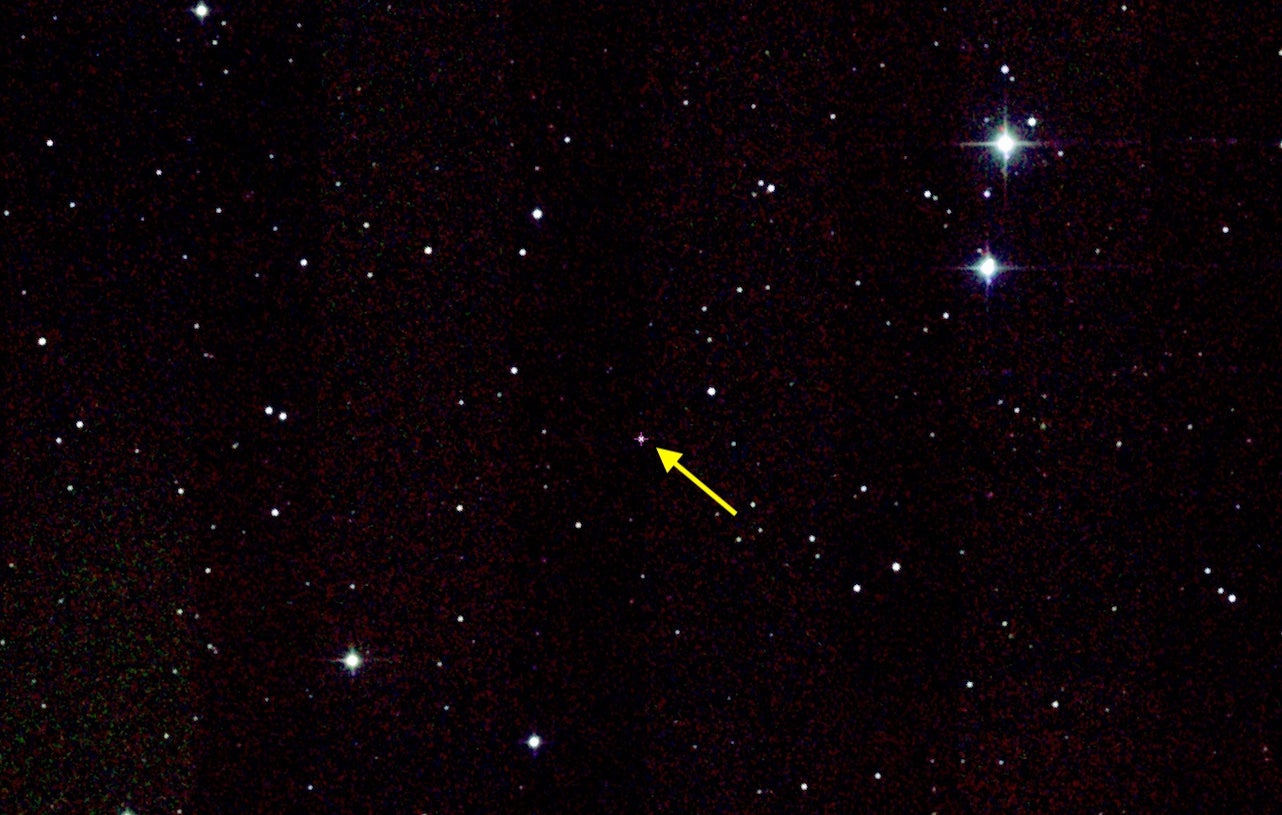
PG 1634+706 is the most distant object in the universe visible in an amateur telescope. This quasar, located in Draco, varies from magnitude 14.2 to 14.7. If you can see Pluto in your scope, you can see this object. Until the advent of space telescopes and large adaptive optics and mirrors, quasars were the most distant objects known. Most were over 2 billion light-years away, which translates to photons emitted when cyanobacteria were Earth’s most advanced life. With JWST, however, we can now see young galaxies at even greater distances.
The redshift of this object is 1.337, making it a midrange quasar. (The current record-holder has a redshift of 7.642, about 13 billion light-years away.) PG 1634+706 is “only” about 9 billion light-years away and can be seen in a 10- or 12-inch scope under excellent skies. Think about it: You can see light from an object that is twice as old as our planet and the entire solar system that we call home.
When I saw this quasar through a 25-inch scope, I was humbled by pondering the infinitesimal odds of those particular photons reaching my eyes after traveling across the cosmos for nearly 9 billion years. That is one of the attractions of astronomy as a hobby: There are many opportunities to be awed by our universe. And it doesn’t have to be an in-your-face total solar eclipse to bring out the wonder.
The quasar’s designation (PG) is for Palomar Green (Bright Quasar Survey); the numbers are its approximate coordinates. If you like stretching your observing to the most ancient photons you can see, there are some one dozen to two dozen quasars brighter than magnitude 14.7 scattered across the sky.









